This article was co-authored by Lydia Shedlofsky, DO. Dr. Lydia Shedlofsky is a Resident Dermatologist who joined Affiliated Dermatology in July of 2019 after completing a traditional rotating internship at Larkin Community Hospital in Miami, Florida. She earned a Bachelor of Science in Biology at Guilford College in Greensboro, North Carolina. After graduation, she moved to Beira, Mozambique, and worked as a research assistant and intern at a free clinic. She completed a Post-Baccalaureate program and subsequently earned a Master's Degree in Medical Education and a Doctorate of Osteopathic Medicine (DO) from the Lake Erie College of Osteopathic Medicine.
There are 7 references cited in this article, which can be found at the bottom of the page.
wikiHow marks an article as reader-approved once it receives enough positive feedback. In this case, 95% of readers who voted found the article helpful, earning it our reader-approved status.
This article has been viewed 353,379 times.
The Bartholin glands are located in the vulva, on either side of the vaginal opening. The gland's primary function is to secrete mucus through the Bartholin duct to create vulvar and vaginal lubrication. If the opening of the duct becomes obstructed, the mucus accumulates, causing swelling next to the obstruction. There are a variety of strategies you can try to get rid of a Bartholin cyst. You can start with home strategies, such as Sitz baths, which may help the Bartholin cyst to resolve on its own. Alternatively, if the cyst persists, you may opt for medical treatments such as pain medications, surgical drainage, marsupialization, and/or antibiotics if your cyst is concurrently infected. After treating your Bartholin cyst, it is equally important to take steps to ensure proper recovery and full healing.
Steps
Using Home Methods
-
1Confirm the diagnosis of a Bartholin cyst.[1] If you have noticed a lump that is painful on one side of your vaginal opening, it may very well be a Bartholin cyst. You may experience pain while sitting or during sexual intercourse, or sometimes no pain at all, only swelling. If you suspect that you may have a Bartholin cyst, it is important to see your family doctor for a pelvic exam to confirm the diagnosis.
- In addition to a pelvic exam, your doctor will likely test for STIs (sexually transmitted infections).
- This is because, if you have an STI in conjunction with your Bartholin cyst, you are at higher risk of having your cyst become infected (and you will likely be given antibiotic treatment — more on this later).
- If you are over 40 years old, your cyst may also be biopsied to rule out the possibility of cancer of the female reproductive system.
-
2Have Sitz baths several times each day.[2] One of the mainstays of treatment for Bartholin cysts are regular Sitz baths. A Sitz bath is when you fill the bathtub with just enough water to cover your buttocks and vagina when you sit down in the water. The water does not need to be any deeper than that, although it can be, if you would like. (This depends on personal preference, and whether you are aiming to make the bath an enjoyable experience, or simply one of convenience.)
- You should have a Sitz bath at least 3 to 4 times per day.
- The purpose of regular Sitz baths is to keep the area around the Bartholin cyst clean, to reduce pain and/or discomfort in the area, and also to increase the chances of the cyst naturally draining itself.
Advertisement -
3See your doctor if your Bartholin cyst does not resolve on its own.[3] If your Bartholin cyst does not naturally drain itself and resolve with Sitz baths after several days, you may want to see your doctor to discuss the possibility of surgical drainage. The reason that it is important to discuss treatment options sooner rather than later is that, if the cyst does not resolve, it may become infected and form what is called an "abscess."[4] This is more complicated to treat than a simple cyst, so it is best to be proactive.
- If you are under 40 and you the cyst is asymptomatic (no pain, fever, etc.), then often no medical intervention is necessary.
- If you notice signs of a fever alongside your Bartholin cyst, see your doctor for treatment.
- To prevent your cyst from becoming infected, use condoms during sex, particularly if you are unsure whether your partner has an STI; however, it is not necessary to refrain from sex.[5]
-
4Take medication to ease the pain.[6] While you are waiting for your Bartholin cyst to be treated and/or to heal, you may wish to consider pain medications to ease any discomfort you are experiencing in the area. You can purchase over-the-counter pain medications at your local pharmacy or drugstore. Some common choices include:
- Ibuprofen (Advil, Motrin) 400 – 600 mg every four to six hours as needed.
- Acetaminophen (Tylenol) 500 mg every four to six hours as needed.
Trying Medical Treatments
-
1Opt for surgical drainage.[7] The most effective way to get rid of a persistent Bartholin cyst is via surgical drainage. You can see your family doctor, who may do it themselves (if they are experienced with the procedure). Alternatively, they may refer you on to another physician to have the procedure performed.
- Most cases of incision and drainage are outpatient procedures done in the doctor's office and only require local anesthetic.
- An incision (opening) will be made in your cyst, allowing any fluid inside to drain out.
- A catheter (tube) may be placed into the cyst for up to six weeks following the procedure. This is usually only done for cases of recurrent Bartholin cysts.
- The purpose of the catheter is to keep the cyst open, so that any further fluid that accumulates can drain out immediately.
- Keeping the cyst open prevents fluid buildup and, as such, allows the cyst to naturally heal.
-
2Take antibiotics.[8] If your Bartholin cyst appears to be infected, your doctor will prescribe you antibiotics following surgical drainage. It is important to complete the full course of antibiotics, and to not miss taking any of the pills, as missing pills will lessen the effectiveness of the antibiotics.
- Also, if you test positive for any STIs, you will receive antibiotics whether or not your cyst is currently infected.
- The purpose to prevent an infection, as testing positive for STIs heightens your risk that your cyst may subsequently become infected.
-
3Ask your doctor about "marsupialization." If your Bartholin cyst recurs, you can speak to your physician about a procedure called marsupialization. This is when the cyst is surgically drained, and then stitches are placed on either side of the cyst to hold it open following the procedure.[9]
- This opening is permanent, and serves to prevent recurrences of the Bartholin cyst.
- You will likely have a catheter (tube) in for a few days following the surgical procedure; however, after that, the catheter can be removed because the stitches will be strong enough to keep the incision open.
-
4Have your Bartholin gland completely removed.[10] If you have a particularly bad cyst, or have had recurrent cysts, one of the "last resort" treatments is to have your Bartholin gland completely removed surgically, or removed via a laser procedure. Both of these are simple procedures that do not require an overnight hospital stay.
-
5Note that there is no known way to prevent a Bartholin cyst.[11] While many people have asked if there are strategies to prevent (or reduce the risk of) a Bartholin cyst developing in the first place, doctors say that there are no known strategies for prevention. Doctors do recommend that you begin treatment — either home treatment or medical treatment — as quickly as possible once you notice a cyst developing.
- Avoiding harsh chemicals and fragrances in the area can reduce irritation.[12]
Recovering After Surgical Drainage
-
1Continue with regular Sitz baths.[13] After surgical drainage or a marsupialization procedure, it is key to continue with regular Sitz baths during the healing phase. Again, this is to ensure that the area remains clean, and to maximize healing while minimizing the risk of infection.
- Sitz baths are advised beginning one to two days following the surgical procedure.
-
2Refrain from sexual intercourse until your catheter is removed.[14] You may have a catheter for four to six weeks to keep your Bartholin cyst open and to prevent further fluid accumulation, following surgical drainage. For as long as the catheter remains in, it is key to refrain from sexual intercourse.
- Abstaining from sex for that time period will also help to prevent your cyst from becoming infected.
- After marsupialization, even though there is no catheter, you will be advised to refrain from sex for four weeks following the procedure to ensure full healing.
-
3Continue with pain medications as needed.[15] You may use over-the-counter pain medications, such as Ibuprofen (Advil, Motrin) or Acetaminophen (Tylenol) as needed. Alternatively, if your pain is more severe, you may ask your doctor for prescription strength pain medications (narcotics) such as Morphine in the initial stages of recovery.
Expert Q&A
Did you know you can get expert answers for this article?
Unlock expert answers by supporting wikiHow
-
QuestionHow can I prevent Bartholin cysts?
 Lydia Shedlofsky, DODr. Lydia Shedlofsky is a Resident Dermatologist who joined Affiliated Dermatology in July of 2019 after completing a traditional rotating internship at Larkin Community Hospital in Miami, Florida. She earned a Bachelor of Science in Biology at Guilford College in Greensboro, North Carolina. After graduation, she moved to Beira, Mozambique, and worked as a research assistant and intern at a free clinic. She completed a Post-Baccalaureate program and subsequently earned a Master's Degree in Medical Education and a Doctorate of Osteopathic Medicine (DO) from the Lake Erie College of Osteopathic Medicine.
Lydia Shedlofsky, DODr. Lydia Shedlofsky is a Resident Dermatologist who joined Affiliated Dermatology in July of 2019 after completing a traditional rotating internship at Larkin Community Hospital in Miami, Florida. She earned a Bachelor of Science in Biology at Guilford College in Greensboro, North Carolina. After graduation, she moved to Beira, Mozambique, and worked as a research assistant and intern at a free clinic. She completed a Post-Baccalaureate program and subsequently earned a Master's Degree in Medical Education and a Doctorate of Osteopathic Medicine (DO) from the Lake Erie College of Osteopathic Medicine.
Dermatologist
References
- ↑ https://www.nlm.nih.gov/medlineplus/ency/article/001489.htm
- ↑ http://www.mayoclinic.org/diseases-conditions/bartholin-cyst/basics/treatment/con-20026333
- ↑ Lydia Shedlofsky, DO. Dermatologist. Expert Interview. 11 November 2020.
- ↑ https://www.nlm.nih.gov/medlineplus/ency/article/001489.htm
- ↑ https://myhealth.alberta.ca/Health/Pages/conditions.aspx?hwid=tw2685#tw2688
- ↑ https://www.nlm.nih.gov/medlineplus/ency/article/001489.htm
- ↑ Lydia Shedlofsky, DO. Dermatologist. Expert Interview. 11 November 2020.
- ↑ http://www.mayoclinic.org/diseases-conditions/bartholin-cyst/basics/treatment/con-20026333
- ↑ http://www.aafp.org/afp/2003/0701/p135.html
- ↑ http://familydoctor.org/familydoctor/en/diseases-conditions/bartholins-gland-cyst/treatment.html
- ↑ http://familydoctor.org/familydoctor/en/diseases-conditions/bartholins-gland-cyst/prevention.html
- ↑ Lydia Shedlofsky, DO. Dermatologist. Expert Interview. 11 November 2020.
- ↑ https://www.nlm.nih.gov/medlineplus/ency/article/001489.htm
- ↑ https://www.nlm.nih.gov/medlineplus/ency/article/001489.htm
- ↑ https://www.nlm.nih.gov/medlineplus/ency/article/001489.htm
About This Article
Before you try to get rid of a bartholin cyst, get a diagnosis from your doctor to make sure it's nothing more serious. Then, take Sitz baths at least 3 times a day, which is when you put just enough water in the bath to cover your vagina and buttocks. During each bath, sit in the water for 10 to 15 minutes to help keep the area around the cyst clean and encourage it to drain naturally. If you’re experiencing pain, take over-the-counter medication. You should seek medical attention if your cyst doesn’t clear up after several days of Sitz baths, since this could mean it's infected. After your doctor has examined you, they may recommend you have the cyst surgically drained, which can usually be done in a doctor’s office with a local anesthetic. For tips from our medical co-author on how to treat an infected cyst, keep reading!
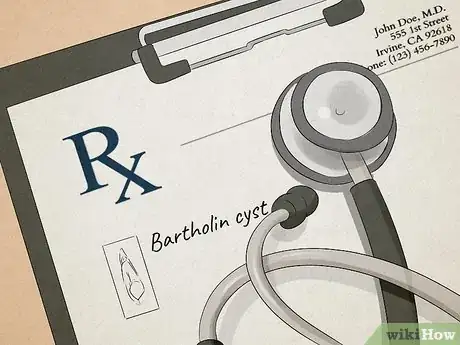



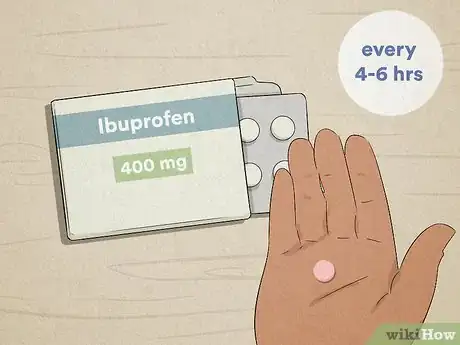
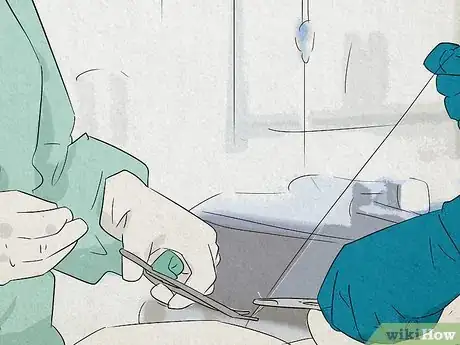
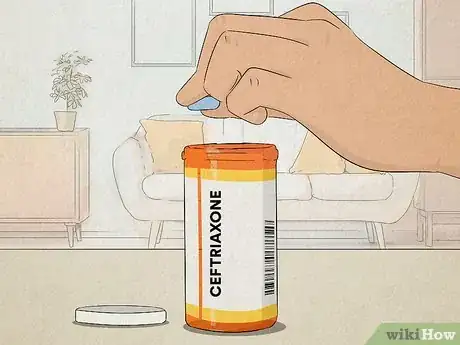
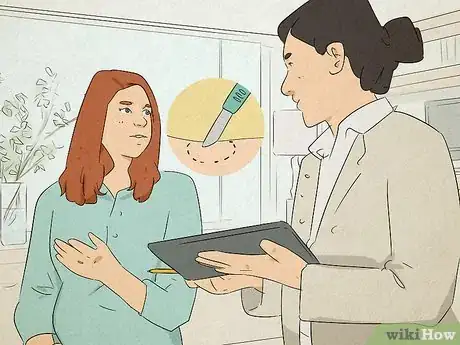



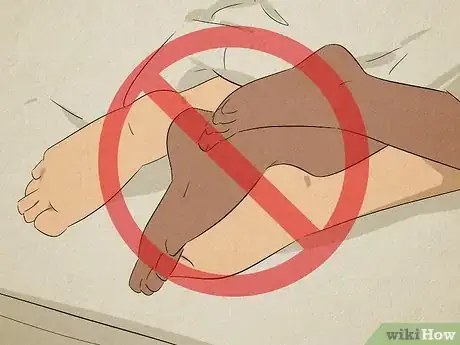
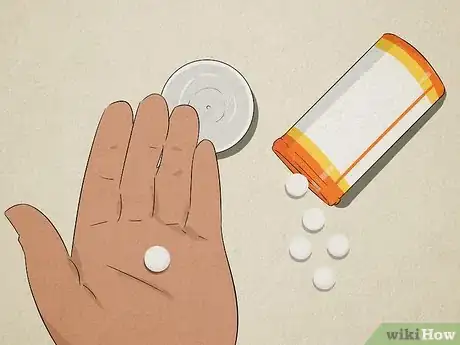

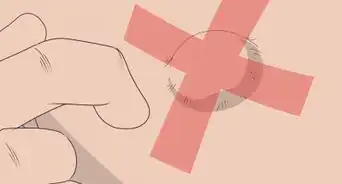




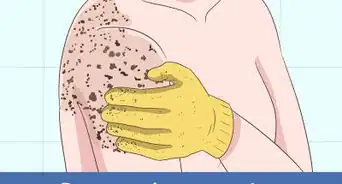




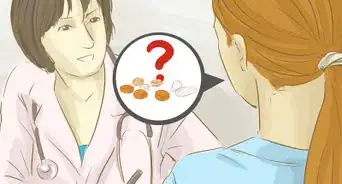

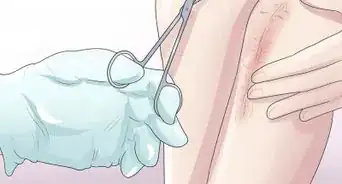





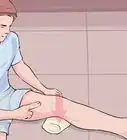





































Medical Disclaimer
The content of this article is not intended to be a substitute for professional medical advice, examination, diagnosis, or treatment. You should always contact your doctor or other qualified healthcare professional before starting, changing, or stopping any kind of health treatment.
Read More...